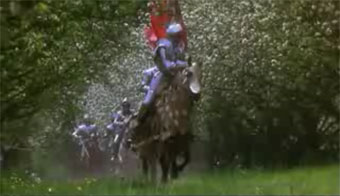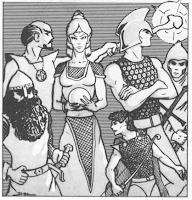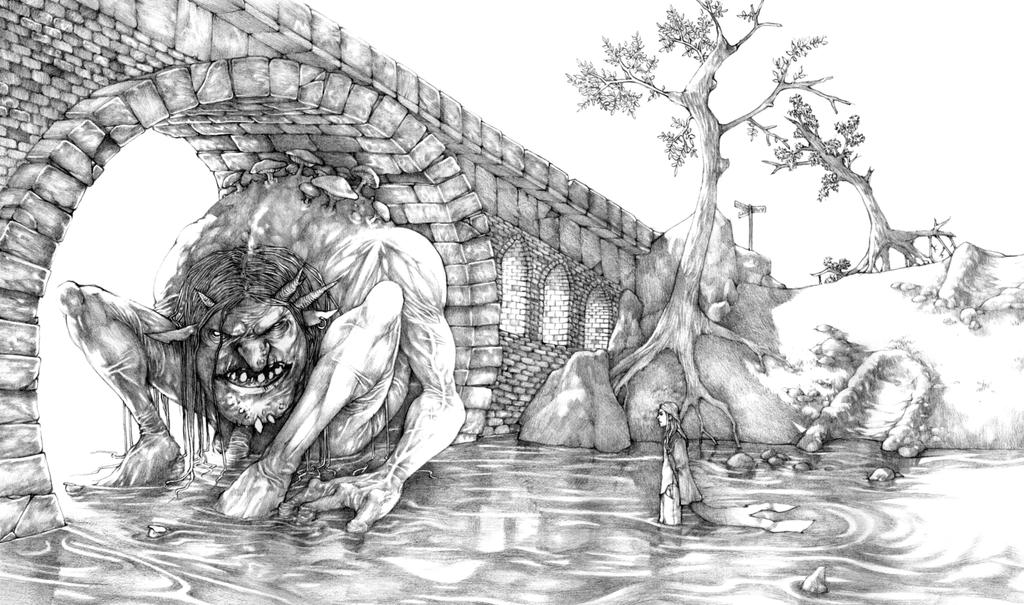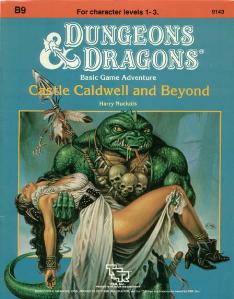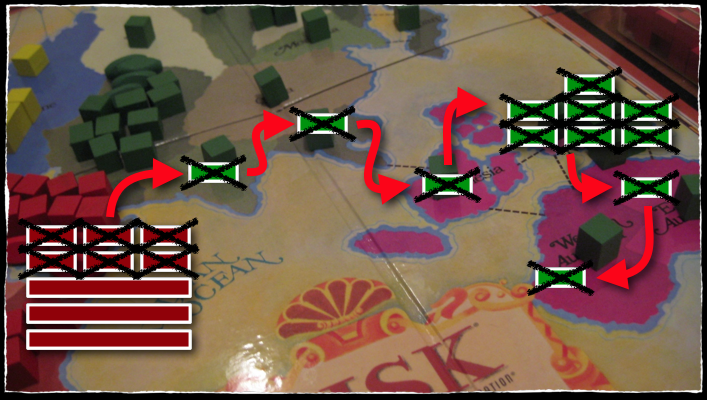"Oh gracious! I wish I was still a dinosaur with a backpack."
... that's what my youngest said upon finding the heavy gold bars hidden behind a secret compartment. We were finishing the
Dungeon of Terror portion of TSR module
B9, Castle Caldwell and Beyond.
 |
| art by Cory Trego-Erdner |
A little earlier, finding that they were trapped in the dungeon beneath the abandoned manor house (the entryway having magically vanished) the kids studied their map and deduced where a secret room
might be. Star the Elf drank her polymorph potion (recovered from an earlier adventure, turned into a Bulette, and dug right through the wall, confirming their suspicions and revealing what just might be a way out.
By the time the aforementioned gold bars were discovered, however, the potion's effects had worn off, leaving Star and friends to lug the newly gold around by hand.
If judged strictly by its coherence, theme, and respect for the players (DM included),
Castle Caldwell and Beyond is probably the worst published adventure that I own ... I rank it lower than
Castle Greyhawk (which I'll contend actually has some quite clever bits mixed in with level after level of bad puns).
Still, with a bit of work I found this old material quite usable.
First, placing the Dungeon of Terror below the "castle" recently purchased by Clifton Caldwell, I Lovecraft-ed it up a bit ... planting old documents describing how the ancient and decadent Vorloi family had moved to Threshold from more southerly climes. Without an heir and rapidly dwindling, the patriarchs of the family quietly rededicated the chapel of their villa-style manor house to the veneration of
Orcus in hopes that malign spirit would grant them children and extended life. The Dark Prince of the Undeath was pleased to accommodate them, transforming the last remaining Vorloi into deathless wights and their servants into ghouls.

I replaced berserkers and insane magic users with ghouls and ghasts, and kept the robber flies for flavor.
I changed the password that allowed the party to escape the dungeon from OHWA TAGOO SIAM ("Oh what a goose I am"), which I hated even back in 1985, into a hymn to Orcus inscribed on a ring (without spaces, it still had to be decoded).
The end result was pretty good, my players enjoyed it, and were relieved when their beloved characters finally escaped
The Dungeon of Terror (not least of all because I had dropped hints that anyone who spent too long down there began turning into a ghoul).
When the party's cleric reported the ghoulish infestation and presence of a chapel of Orcus to Threshold's Patriarch, the property was promptly seized by the church and placed under ban, leaving poor Clifton Caldwell with nothing to show for his investment. Not only did he refuse to pay the party for their trouble, but the apoplectic merchant has sworn revenge!
At
Dragonsfoot Lord Kilgore sums up our experiences nicely, writing, "The ideas are bland and generic. The details are garbage. The writing is excrement. I've DMed each mini-adventure several times over the past 20 years. Every single time it has been fun."
Have you ever started with a real lemon of an adventure and turned into something brilliant?
What's your favorite module make-over story?
 Carl: "I think the best part about being a DM is how you have to creatively develop a plot and dialog for your dungeon. Being a DM isn't the easiest though. You usually have to deal with player complaints. Also, it isn't the easiest to come up with concepts for rooms and how they influence other rooms."
Carl: "I think the best part about being a DM is how you have to creatively develop a plot and dialog for your dungeon. Being a DM isn't the easiest though. You usually have to deal with player complaints. Also, it isn't the easiest to come up with concepts for rooms and how they influence other rooms." Eric: "The best part of DMing is the amount of creativity you can put into the rooms. It's actually quite difficult to try to stay quite balanced while having fun too, because you want all the players active."
Eric: "The best part of DMing is the amount of creativity you can put into the rooms. It's actually quite difficult to try to stay quite balanced while having fun too, because you want all the players active."





